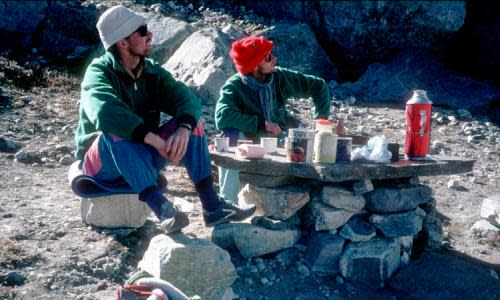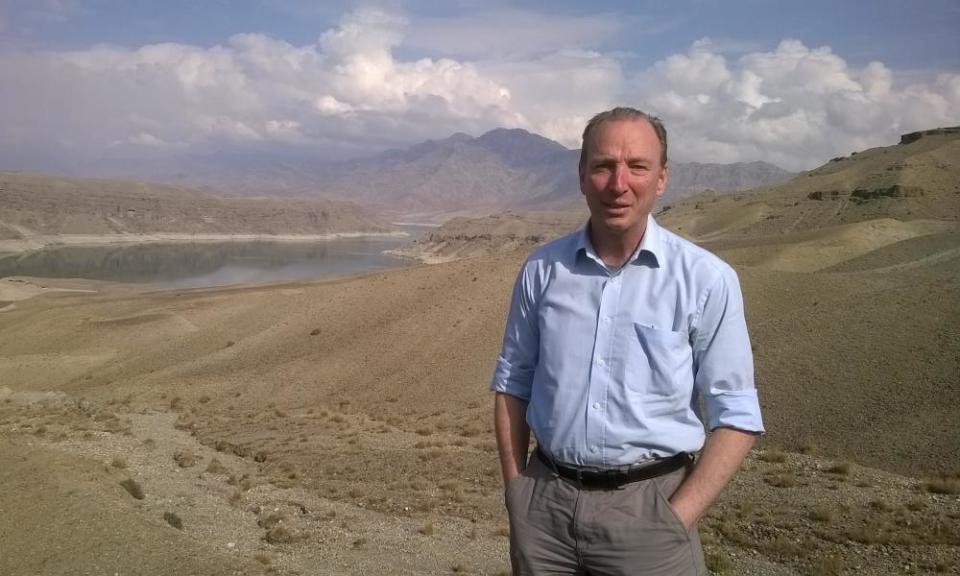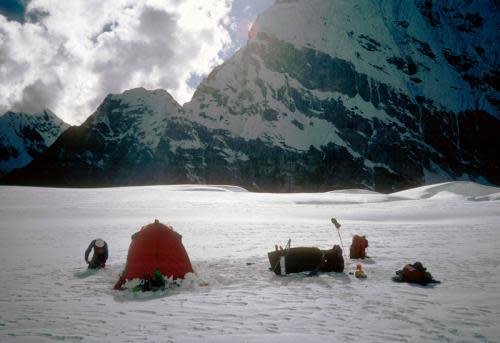Discovery of dead Himalayas pair brings 'closure' after 30 years

A Scottish mountaineer who spent weeks searching for two friends who disappeared in the Himalayas more than 30 years ago has spoken of finally feeling a sense of closure after their bodies were recently found.
Steve Aisthorpe, 55, was with Kristinn Rúnarsson and Þorsteinn Guðjónsson on an expedition to Pumori on the Nepal-Tibet border when he fell ill partway through the expedition and told his friends to go on without him.
Rúnarsson and Guðjónsson were last seen alive at a height of 21,650ft on 18 October 1988. Their remains were found last month by an American mountaineer at the end of a glacier below the climb route, which suggests they fell into the crevasse at its base.

Aisthorpe, a mission development worker for the Church of Scotland, said: “The discovery of the remains of Þorsteinn and Kristinn after so many years have inevitably brought many emotions to the surface for all who knew and loved these wonderful guys.”
The bodies were brought back to Kathmandu, the capital of Nepal, by a group of local climbers. A cremation service was attended by relatives of the men who took their ashes home to Iceland. Aisthorpe said that Rúnarsson’s fiancee was pregnant with his child at the time of the tragedy and he now has a son who is 30 years old. His son was one of the family members at Kathmandu.
Aisthorpe spoke of his distress as he spent weeks searching for two friends. He said: “I’ve never felt as alone as the day I arrived back at our high camp. As I worked my way upwards, I desperately hoped that Kristinn and Þorsteinn had descended safely and were now lying in their sleeping bags in the tiny red tent camp.
“As it came into view, I called out at the top of my voice – my calls echoed from the rocks and ice before fading. But the silence was palpable.”
He eventually reached their tent, but found it to be empty. “It was then that my guts started to twist and a cold sweat began,” he said.
Aisthorpe said he summoned help and a helicopter search was finally launched five days after the men were last seen. Aisthorpe left a couple of weeks later after no signs of his friends were found.
He hadn’t heard anything about what happened to his two friends until three weeks ago when an Icelandic filmmaker, who was already in touch with Aisthorpe about making a documentary about his experiences, called him. “It was him who contacted me while I was in holiday in Morocco, about three weeks go, and said have you heard the news,” Aisthorpe said. “What ran through my mind first of all was: ‘Is it really their bodies?’”
The remains were transported to Kathmandu and the authorities contacted Aisthorpe asking if he had any photographs of Rúnarsson’s and Guðjónsson shortly before they died. Aisthorpe sent some through and the authorities were able to identify some articles of clothing and equipment.

“The two things that’s happened over the last three weeks is closure and the other thing is that it’s brought us all together again,” he said. Aisthorpe is planning to go to Reykjavík in Iceland soon to meet their families and pay his respects.
He added his faith was “vital” in helping him make sense of the tragedy. “This week, I dug out my diary from that period and it was interesting to see how vital my faith was at that time. I recorded in my diary the sense of loving presence and how prayer and what I was reading in the scriptures on particular days really seemed to speak to the situation,” he said.

 Yahoo News
Yahoo News 
